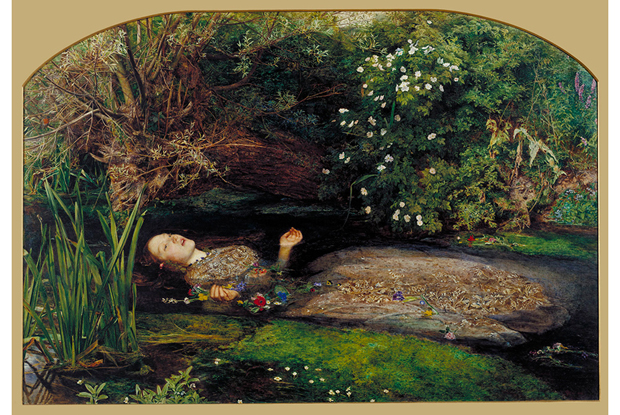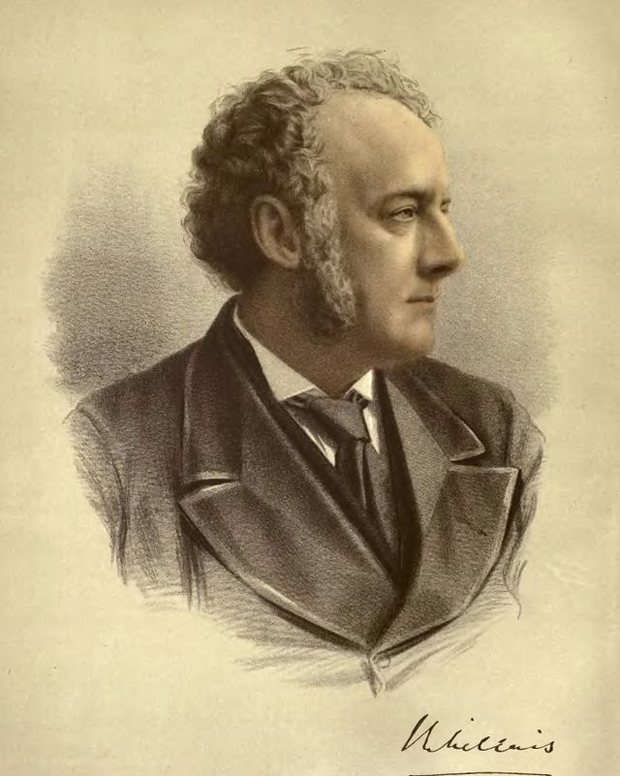
What Millais went through in order to paint Ophelia
As Ophelia returns to the Tate today, our Millais author Jason Rosenfeld tells us how the painter spent eleven hour days fighting off bulls, swans and 'muscular' flies in order to realise the most recognisable painting ever created
While we love it when great works of art go on tour, allowing everyone to get a chance to see them in their pristine glory, we must say we were happy to hear that major Pre-Raphaelite works including John Everett Millais’s Ophelia and Dante Gabriel Rossetti’s The Beloved are back on display from this morning (Friday 8 August) at Tate Britain, alongside other key works from the Pre-Raphaelite movement after a world tour which was seen by over a million people.
Millais’s Ophelia was obviously one of the founding works in Tate’s collection and has long been one of the UK’s most loved paintings - it regularly flip-flops between the best and second best-selling postcards in the museum's shop. The story behind how Millais painted it is a good one.
Depicting the drowning Ophelia from Shakespeare’s play Hamlet, the painting was regarded in its day as one of the most accurate and elaborate studies of nature ever made. The background was painted from life on the bank of the Hogsmill River in Surrey and the model was Elizabeth Siddall who posed for the painting in a bath of water kept warm by lamps underneath. The painting was made in the summer of 1851 after Millais had travelled to Surrey with fellow pre-Raphaelite William Holman Hunt. Show curator and Millais author Jason Rosenfeld takes up the story:
"To paint the picture Millais adopted the precision of his practice the summer before, working long hours on the Hogsmill River near Ewell, two miles from his lodgings. Millais was working eleven hour days, fending off 'muscular' flies, sitting under an inadequate umbrella, threatened by a bull in an adjacent field, buffeted by whipping winds and at the mercy of two swans who persisted in positioning themselves in his work spot or eating the water weeds he was attempting to paint on the left side of the canvas.These were the lengths that the true Pre-Raphaelite went to in order to paint the truth of nature!"

It's worth noting that, somewhat astonishingly, although it's Millais's most recognised picture, Ophelia was met with a mixed reaction on its first showing in London as Rosenfeld notes. "While more advanced critics were able to rectify the challenging combination of precise detail of nature with the pathos on the heroine's face, while conservative, establishment writers saw it as needlessly morose and threatening, and not Romantic in tone." Whatever the case, themes of women and extreme states of mind would continue to obsess Millais for the rest of his career.
The painting is back on show alongside Dante Gabriel Rossetti’s Beata Beatrix, Ford Madox Brown’s Jesus Washing Peter’s Feet and William Holman Hunt’s The Awakening Conscience among others. If you can't make it to the Tate Britain there are still a few copies left of Jason Rosenfeld's peerless book on Millais and his place within the Pre-Raphaelite movement here. Check it out here.